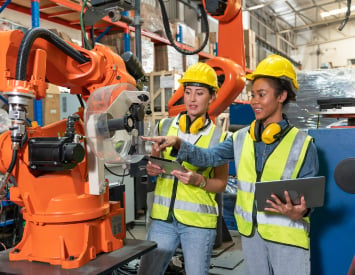One of the hottest shares at present is that of NVIDIA – a company prominent in the manufacturing of processors for use in AI – demonstrating that the AI hype has captured our imagination and is being enthusiastically embraced. It all began as a slow burn, but has been building over the past year with extravagant promises being made, by various vendors, that AI will dramatically change the way we work and live. In the last gasp of 2023 I ran workshops in five countries, on the use of AI in a range of engineering applications, with experienced engineering professionals. The consensus was that AI has some way to go.
Essentially, generative AI algorithms are based on a vast repository of content extracted from the web, enabled by formidable computing power. In November 2022, OpenAI announced the Large Language Model (LLM) and associated ChatGPT – an interactive chat bot. It has taken the world by storm with prompt engineering the key technique used to apply it. The legal ownership of that content remains problematic.
There are some intriguing comparisons between ChatGPT and humans. Humans supposedly need 25 years to attain a well-developed brain with its ever-changing neural connections, which are autonomous and energy-efficient. ChatGPT, on the other hand, requires approximately one and a half years of training, but no changes are possible once the ‘artificial neural network’ is constructed. Furthermore, it requires vast amounts of computing power to be trained and to operate.

During the aforementioned workshops I broke the attendees into teams, to use an AI tool like ChatGPT and principles of sustainability. Some of the design scenarios were:
- Construct a borehole and water treatment plant in a remote part of the country for a community of around 300 people.
- Design an offshore pump station to pump sea water at the rate of 400 m3 per hour into a mineral processing plant. Include details of the control and instrumentation strategy.
- Build a bridge across a 30 m wide river for a remote community using local materials and labour.
Invariably the lack of specific data relating to each scenario restricted the effective and productive application of AI. This was no surprise – AI was constructed using European and US content and the workshops ran outside these geographical zones. Design data and information relating to an application in a particular environment is largely unavailable on the internet.
The AI tools were surprisingly honest when offering solutions. For instance, the proffered information would include suggestions that extra research was required in the specific locations, and that local standards should be consulted.
By the end of the workshops attendees were convinced of AI’s benefits, but understood the need to be highly critical of the content it provides; to rely on their own (and their team’s) expertise to identify and gather local data, and to ensure their projects’ solutions are refined and fit-for-purpose.
An AI tool such as ChatGPT can be used productively by an engineering professional in various ways: to generate technical answers; to translate complex concepts into simple English; to troubleshoot problems; to provide project management ideas on timelines, budgeting and scheduling (for instance); to submit job prospects and opportunities for career progression; or to advise on collaboration opportunities with other engineering professionals.
However the workshops and some subsequent use of AI tools suggest a number of salient rules when employing AI in engineering projects:
- Always use a human expert to check the results constructed by the AI tool.
- Never undertake a design project which you cannot check based on your knowledge and experience.
- Avoid using sensitive data; this is likely to be made public.
- Only use data in the best interests of the individual and society.
Will AI ever replace the imaginative and creative engineering professional? Maybe. In the interim, build your skills and engineering experience, particularly in developing disciplines in automation.

Do not be afraid to use AI tools as a useful adjunct to your work, but maintain your professional vigilance and critical approach at all times.


